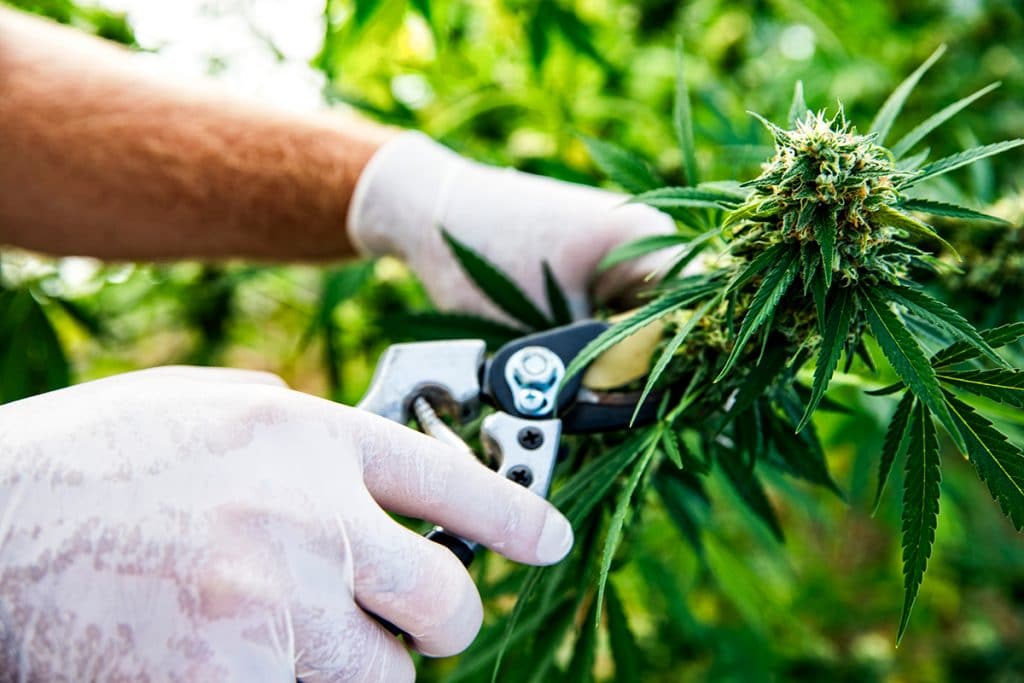Over the next few days, hemp attorney Chelsie Spencer will be addressing issues that she has noted with the United States Department of Agriculture’s (“USDA”) proposed program rules, the Texas Department of Agriculture’s (“TDA”) Revised Interim Program Rules, and the Texas Department of State Health Services (“DSHS”). Keep in mind that these rules are all in their proposed period and that now is the time for the public to provide input. Today, we will be highlighting issues with the USDA’s program rules.
Comments on the USDA Interim Rules may be submitted HERE.
1. Total THC
The USDA interim rules mandate that hemp crops must not exceed 0.3% total THC. What is total THC? Total THC content is derived from the sum of THC and THC-A content on a dry-weight basis, after decarboxylation.
What is the problem with this approach?
The USDA is contradicting Congressional intent and creating its own law. The 2018 Farm Bill specifically mandates that hemp samples may be tested with “post-decarboxylation or other similarly reliable methods.” The interim rule completely foregoes the possibility of available non-decarboxylation methods and does not account for stability issues inherent with THC-A.
Why is this a problem?
First and foremost, administrative agencies, such as the USDA, are not permitted to make law. That is the job of our Legislature. The USDA is bound by the purviews our Legislature set out for them in the 2018 Farm Bill. Here, the USDA’s interim Total THC rule directly contradicts the 2018 Farm Bill. On the practical side, this requirement, combined with the short harvest window, is going to decimate the CBD industry. In light of the top testing requirement, this will undoubtedly kill the flower industry.
2. The 15-Day Harvest
An arbitrary fifteen-day harvest window is too short for hemp cultivators. External environmental factors that a farmer cannot control, such as weather, will have a severe impact on such a tight harvest deadline. Imagine a scenario wherein it rains for two weeks straight. In that scenario, it is nigh impossible for a small acreage farmer to manually harvest her hemp crop. Additionally, the window is quite restrictive for large acreage enterprises that now face expending a massive amount of labor in a window that is too short. This window needs to be extended to thirty (30) days.
3. Drug Enforcement Administration (“DEA”) Lab Certification
The 2018 Farm Bill established, without question, that hemp is a legal good. There is no need for a testing lab to require DEA certification. Furthermore, requiring DEA certification for testing laboratories will lead to a massive testing backlog across the nation, particularly provided the short harvest window addressed above.
4. Top Testing
The USDA’s interim rules seek to impose a top-testing requirement, meaning that a flower or bud sample form the top one-third of the plant is required. The 2018 Farm Bill contains no such restriction on sampling. The entire hemp plant should be available for testing. Requiring top testing is, once again, going to decimate the CBD market and kill the sale of hemp flower. Where is the most concentrated portion of the hemp plant for cannabinoids? You guessed it. The flower.
5. Lack of Remediation
The USDA provided no available path to remediation for farmers. Instead, it requires destruction of the hot crop, with no exceptions. This rule shows a lack of knowledge regarding the viability of hemp crops: environmental stressors such as heat, water availability, wind, etc. all impact the plant in its growth stages. It is exceedingly easy for a farmer to do everything right and still have a crop test hot. Instead of requiring US farmers to take a total revenue loss, they should be allowed to remediate hot crops, either through use in agricultural food, fiber, or through trimming of the plant (usually at the buds).
6. Negligent Violation Threshold of 0.5% THC
The USDA once again has imposed an arbitrary threshold not contained within the 2018 Farm Bill of a 0.5% THC threshold for a “negligent violation.” Combined with the top testing and fifteen-day harvest window, thousands of hemp farmers across the nation will be destroying crops. We need to protect our farmers. At the least, an increase to permit 1% THC negligent violation threshold is needed.
If you are a hemp farmer or intend to grow hemp, these rules impact you. You need to submit comments to the USDA and voice your concerns with the issues identified above or any other issues you spot in the Interim Rules. We chose our top six, but there are numerous others.
As a hemp lawyer, Chelsie Spencer works with a wide range of clients in the hemp and CBD industries and remains active in legislative activity impacting legal hemp businesses. Contact Ritter Spencer Cheng or give us a call at 214.295.5070 for more information.







